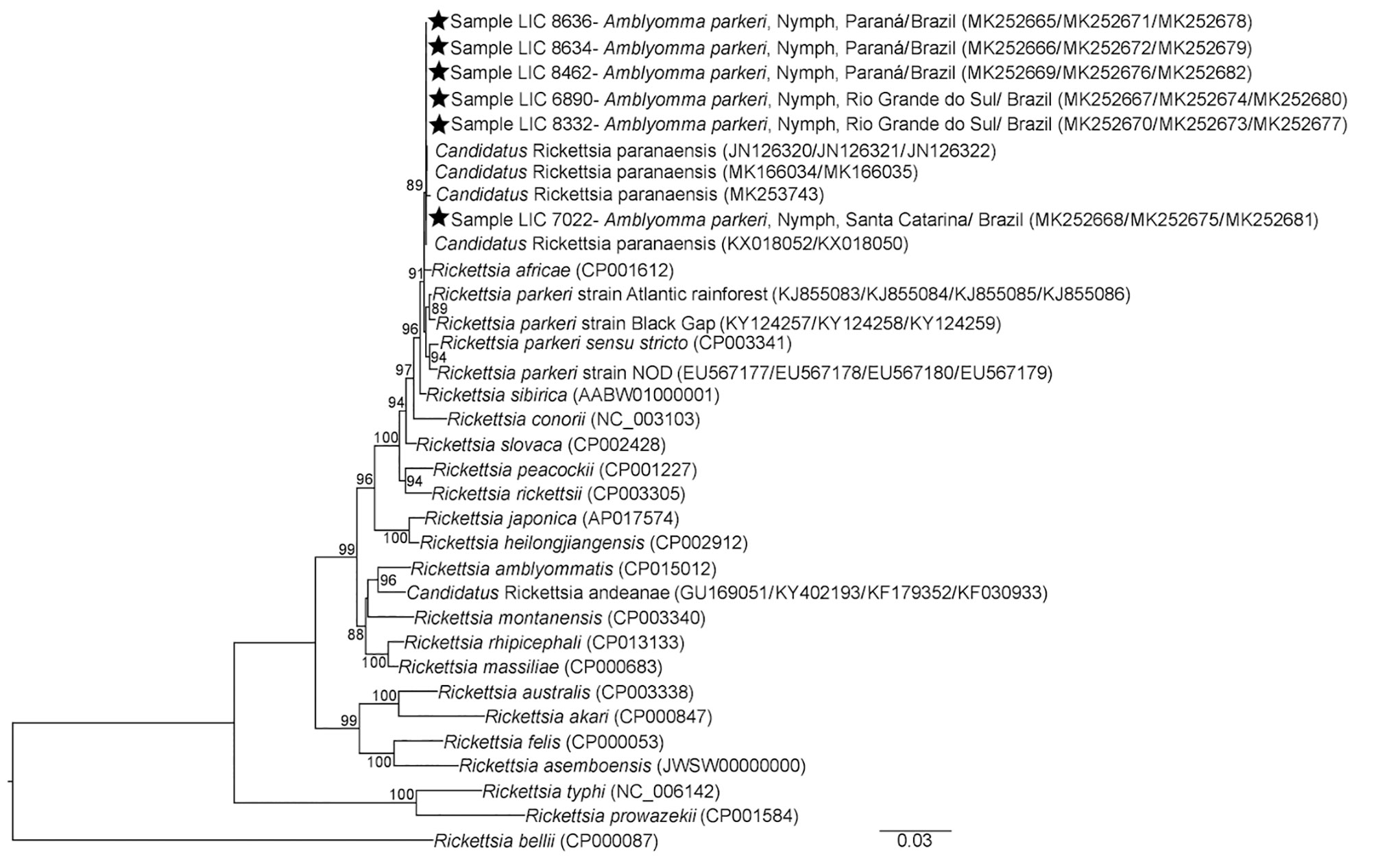Volume 25, Number 12—December 2019
Research Letter
Human Parasitism by Amblyomma parkeri Ticks Infected with Candidatus Rickettsia paranaensis, Brazil
Figure

Figure. Concatenated phylogenetic analysis of rickettsia gene fragments detected in Amblyomma parkeri ticks in Brazil. Gene fragments gltA (1,013 bp), htrA (370 bp), ompA (494 bp), and ompB (822 bp) were inferred by maximum-likelihood analysis with the evolution model T92 + G (Tamura model). Values on the branches indicate bootstrap values (cutoff value 70%). Stars indicate sequences obtained in this study. GenBank accession numbers are given in parentheses. Scale bar indicates nucleotide substitutions per site.
Page created: November 18, 2019
Page updated: November 18, 2019
Page reviewed: November 18, 2019
The conclusions, findings, and opinions expressed by authors contributing to this journal do not necessarily reflect the official position of the U.S. Department of Health and Human Services, the Public Health Service, the Centers for Disease Control and Prevention, or the authors' affiliated institutions. Use of trade names is for identification only and does not imply endorsement by any of the groups named above.